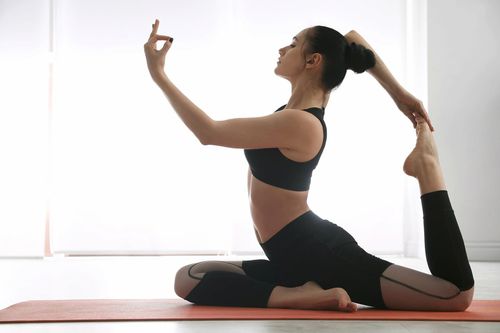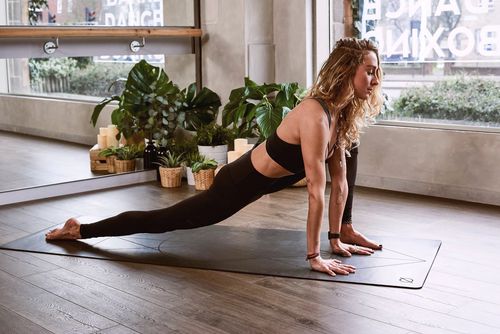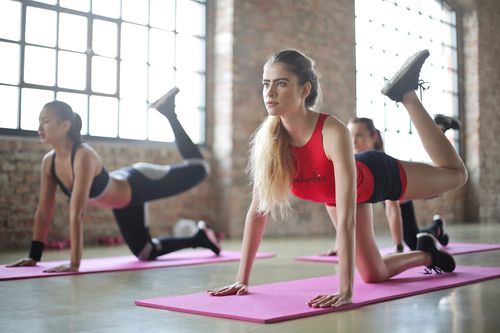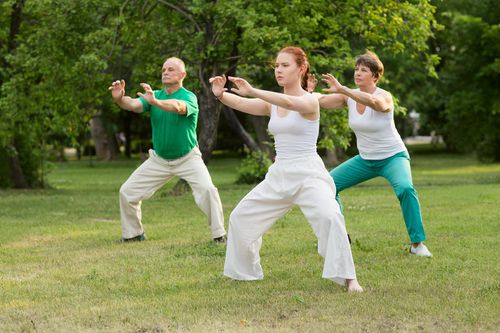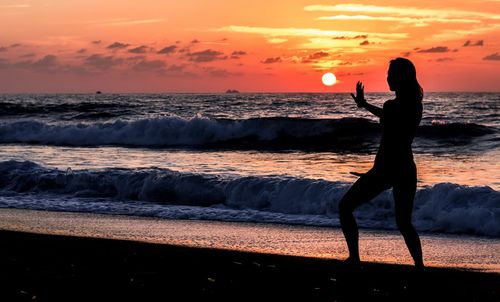What is Pilates?
Developed by physical trainer Joseph Pilates in the early 20th century, Pilates is a low-impact physical fitness system that aims to strengthen the muscles while improving flexibility and postural alignment. Joseph created it to strengthen the human mind and body as he believed that physical and mental health are interrelated. He first used the modality to accelerate the rehabilitation process of World War II soldiers.
Pilates integrates muscle control, strength training, flexibility, breathing and body awareness. It is a series of movements performed on floor mats or specifically designed exercise apparatus that engages the body and mind. A Pilates class is supervised by extensively trained teachers.
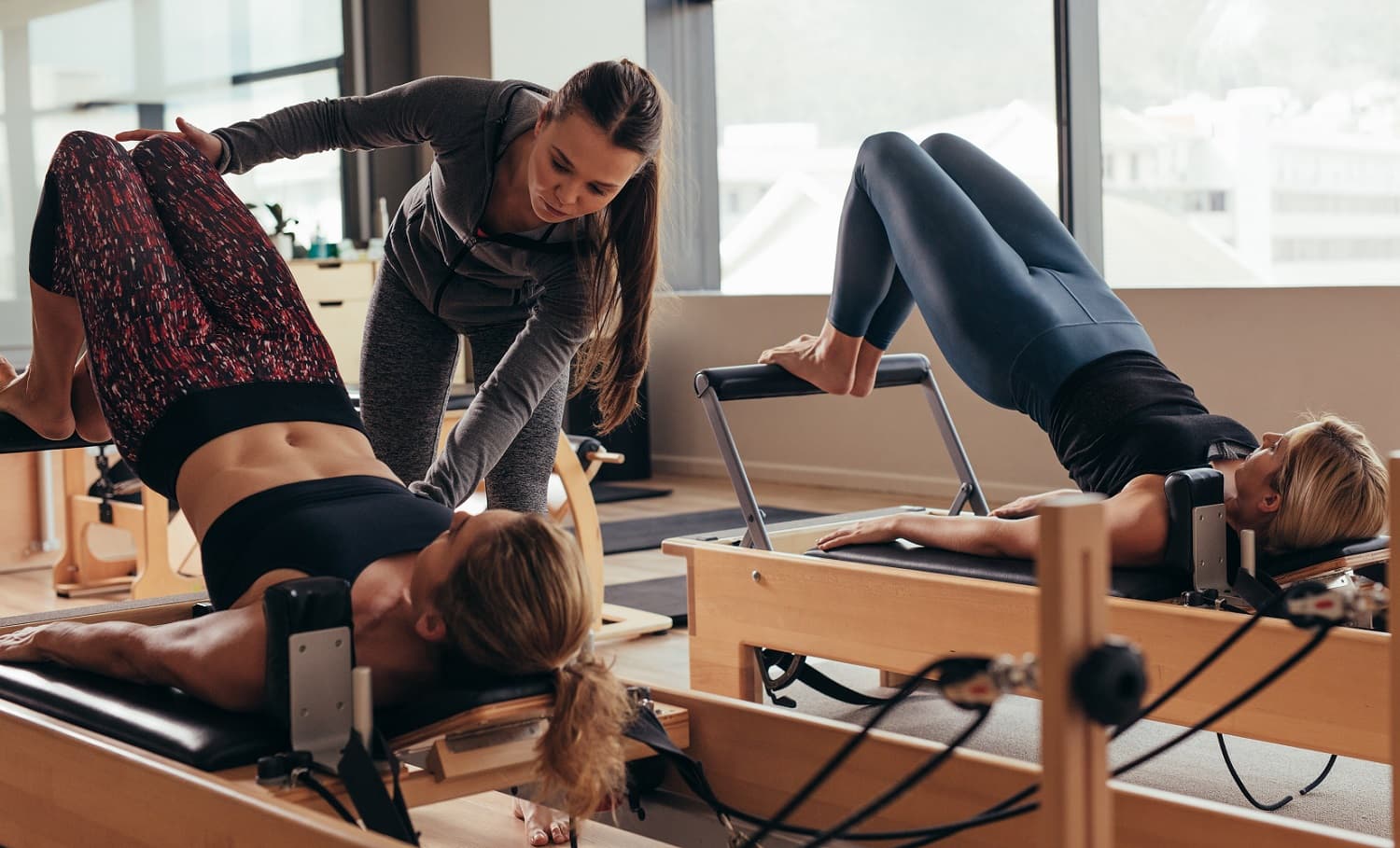
How Does Pilates Work?
Pilates is more than just a physical workout; it coordinates the mind, body and spirit through the precise execution of a combination of simple exercises that aim to achieve core strength, balance, flexibility and endurance. Pilates is based on the following principles:
- Breathing
- Concentration
- Control
- Centering
- Flow
- Postural alignment
- Precision
- Relaxation
- Stamina
Floor pilates is performed on a mat and uses only a few pieces of equipment, while Apparatus Pilates uses various equipment specially designed for pilates such as:
- Cadillac (Trapeze Table)
- Wunda Chair
- Reformer Bed
- Spine Corrector
- Ladder Barrel
- Magic Circle
In mat Pilates, you perform a set of exercises while seated or lying on your back. Your breath plays an important role because concentrating on it while performing the exercises will strengthen your core muscles, lower back, pelvic floor, hips and glutes and make your body longer and leaner.
Apparatus pilates offers the same benefits as mat pilates but at a faster rate. Instead of using your body weight to improve core strength, flexibility and balance, you work with varying levels of resistance by pushing or pulling the springs attached to the equipment.
What are the Benefits of Pilates?
Practising Pilates offers numerous benefits to one's physical, mental and emotional health. In addition to toning the body, improving body posture, increasing flexibility, this whole-body mind-body workout does many other things, including:
- Helps in forming abs and core strength
- Helps reduce back pain
- Improves backside
- Has minimal impact on the knees and joints
- Boosts mental health
- Improves focus and concentration
- Improves sports performance
- Improves blood circulation
- Improves memory
- Gives better spinal health and strength
- Prevents the risk of future injuries
- Gives strength without the bulky muscles
- Reduces pain associated with Alzheimer's disease
- Benefits pregnant women by strengthening their pelvic muscles and promoting efficient body mechanics
- Assists weight loss
- Helps in reducing anxiety and stress
- Boosts stamina
- Eases digestion process
- Increases energy level
- Helps in cutting down body fat and lower cholesterol levels
- Lowers blood pressure
- Assists with recovery from injuries
- Strengthens the immune system
- Improves breathing irregularity
- Helps alleviate headaches and migraines
- Improves sleeping pattern and reduces insomnia
What Are the Differences Between Pilates and Yoga?
Yoga was developed with the purpose of connecting the person's consciousness with the universal consciousness using physical activity. To sum up, its aim is not only to improve physical health, but also emotional and spiritual health. Pilates was originally developed for physical rehabilitation. Later on, this idea extended to gain strength, flexibility and body awareness without building bulk.
Yoga involves meditation during the exercise while Pilates is a full-body workout that can be performed on a mat or on specific Pilates equipment like the Cadillac and reformer bed.
What Can You Expect From Pilates?
Pilates is typically taught in a class environment or on a one-on-one basis. A session can run for 45 minutes to one hour, and during which time, the client's body movements and breath control are continually monitored by the Pilates instructor.
Expect a lot of bending, twisting and stretching in a Pilates class, so participants must come in comfortable clothes that won't obstruct their movements. Women can pair a pair of leggings with a tank top while men may wear tapered yoga pants and a body-hugging T-shirt. While it's okay to go barefoot in class, grip socks provide support and balance in difficult exercises.
Although most Pilates studios provide mats to their clients, it helps to have your own mat so that you can practice at home what you learn in class. You can do Pilates every day or every other day, depending on what suits your body. Practising Pilates religiously will improve the look and feel of your body in less than a month.
Pilates can also be done through online sessions.
